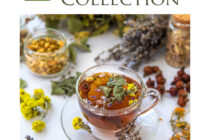Chamomile Blossoms Organic
Chamomile is popular for it’s calming effect on nervous stomachs and as an aid to sleep. Item No: 1190-50
Buy Organic Chamomile Blossoms
Chamomile
Matricaria chamomilla; Chamaemelum nobile; Matricaria recutita
Chamomile is found growing wild throughout North America, Europe, Asia and the Middle East. This versatile herb has been used for centuries by many different cultures for literally hundreds of conditions – and its use is still very prevalent today. Both German and Roman varieties of chamomile have similar effects, although the German variety has been studied more thoroughly in clinical trials.
Despite being unrelated to the fruit, chamomile is said to have a distinct “apple” scent. In fact its name “chamaemelum” comes from the Greek “kamai” meaning or “earth” and “melon” meaning “apple”.
Chamomile teas may be used for relief of insomnia, nightmares, stress, restlessness, nervous digestive complaints (weak appetite, dyspepsia, gas and bloating), inflammatory conditions of the GI tract, colic in infants, diarrhea in children, travel sickness, relief of menstrual cramps (via encouraging menstrual flow), headaches, and fevers. Chamomile is also used as a rinse for lightening blonde hair. Topically, chamomile is often used as an antiseptic and may help with mastitis, hemorrhoids, skin and mucus membrane inflammation – speeding the recovery of open wounds including eczema. It is also effective for treating oral mucositis caused by therapeutic radiotherapy and chemotherapy.
Today, chamomile is used primarily as a sedative herb and is common in soothing bedtime tea formulas and bath preparations. Its calming effects have been rigorously studied (although the mechanism of action has not been definitively confirmed) and this common herb is generally recognized to contain antibacterial, anti-inflammatory, antifungal, antispasmodic, anti-viral, and anti-ulcer as well as sedative properties. Among the active ingredients, quercetin, apigenin (both are thought to inhibit antigen-stimulated mast cell release of histamines), some coumarins and volatile oils such as matricin, chazulene, alpha bisapoloid and bisaboloid oxides are thought to contribute to chamomile’s anti-inflammatory, calming and digestion-aiding properties. Chamomile exerts some anti-inflammatory effects as well, possible via inhibiting lipoxygenase and cyclooxygease (the enzymes responsible for releasing and leukotrienes involved in the inflammatory response). Preliminary research on chamomile is promising, suggesting that the properties of this common roadside weed may slow peristaltic contractions of the GI tract (useful for treating colic), have antipruritic properties and may increase cyclic AMP levels (thus be helpful for treating morphine withdrawal and dependence).
To prepare a cup of chamomile tea, add 2-3 teaspoons of dried flowers per cup of hot but not boiling water or 3-4 teaspoons per pot.. Let steep for 5 minutes. Honey or lemon may be added to taste. This tea may be consumed up to three times daily. For external use a tea may be made and used as a rinse, or the flowers may be moistened, covered with a cloth and wrapped on the affected part as a poultice.
ALTHOUGH GENERALLY CONSIDERED QUITE SAFE CHAMOMILE MAY CAUSE AN ALLERGIC REACTION (ANAPHYLAXIS, DERMATITIS) IN THOSE WITH RAGWEED SENSITIVITIES. LONG-TERM DAILY USE IS NOT RECOMMENDED AS A RAGWEED ALLERGY CAN DEVELOP IN SOME VERY RARE INSTANCES, ESPECIALLY IF USED NEAR THE EYES. CHAMOMILE MAY INTENSIFY THE SEDATIVE EFFECTS OF OTHER CALMING HERBS SUCH AS VALERIAN, ST. JOHNSWORT, SKULLCAP, CATNIP, CALIFORNIA POPPY ETC. AND SHOULD BE USED CAUTION. CHAMOMILE MAY INTERACT WITH ORAL CONTRACEPTIVES, AND SOME PRESCRIPTION DRUGS SUCH AS WARFARIN, CYTOCHROME P450 SUBSTRATES (AMITRYPTYLINE, PROPANOLOL, VERAPAMIL ETC). CHAMOMILE IS THOUGHT TO BE GENERALLY SAFE DURING PREGNANCY.
For educational purposes only. This information has not been evaluated by the Canadian Food & Drug Administration. This information is not intended to diagnose, treat, cure or prevent any disease. www.distinctlytea.com 519-578-2010 distinctlytea@rogers.com Research compiled and summarized by Keila McCullough BHSc, ND (cand.) Distinctly Tea Inc.
Sources:
“A metabonomic strategy for the detection of the metabolic effects of chamomile (Matricaria recutita L.) ingestion”. Wang Y, Tang H, Nicholson JK, et al. J Agric Food Chem 2005;53:191-6.
“Chamomile” Monograph. Botanical.com. http://www.botanical.com/botanica/mgmh/c/chammo49.html.
“Chamomile” Monograph. Natural Medicines Comprehensive Database. http://www.naturaldatabase.com
“Dietary intake of the flower extracts of German chamomile (Matricaria recutita L.) inhibited compound 48/80- induced itch-scratch responses in mice”. Kobayashi Y, Nakano Y, Inayama K, et al. Phytomedicine 2003;10:657- 64.
“Evidence for the efficacy and safety of topical herbal drugs in dermatology: part I: anti-inflammatory agents”. Hormann HP, Korting HC. Phytomedicine 1994;1:161-71
“Herbal extracts modulate the amplitude and frequency of slow waves in circular smooth muscle of mouse small intestine”. Storr M, Sibaev A,Weiser D, et al. Digestion 2004;70:257-64.
“Management of oral mucositis during local radiation and systemic chemotherapy: a study of 98 patients”. Carl W, Emrich LS. J Prosthet Dent 1991;66:361-9.
“Matricaria chamomilla extract inhibits both development of morphine dependence and expression of abstinence syndrome in rats”. Gomaa A, Hashem T, Mohamed M, Ashry E. J Pharmacol Sci 2003;92:50-5.
“Matricaria chamomilla (German chamomile)” Monograph. Alternative Medicine Review. Volume 13 Number 1. Retrieved Online May 13, 2010 from PubMed database: http://www.thorne.com/ altmedrev/.fulltext/13/1/58.pdf
Photo Courtesy Of:
Herbs Guide: A Complete Website on Herbs. http://www.herbsguide.or/chamomile.html
Research compiled and summarized by Keila McCullough BHSc, ND (cand.)



0 Comments